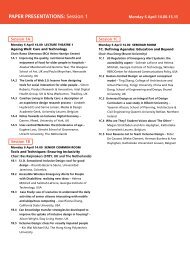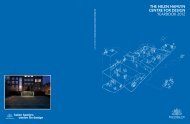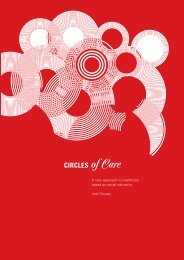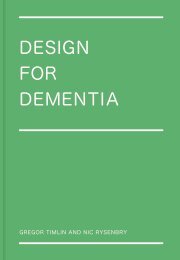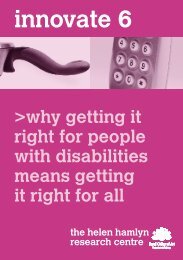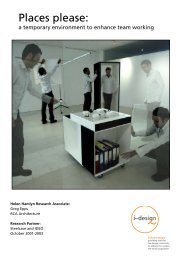Download in Adobe PDF format - Helen Hamlyn Centre - Royal ...
Download in Adobe PDF format - Helen Hamlyn Centre - Royal ...
Download in Adobe PDF format - Helen Hamlyn Centre - Royal ...
You also want an ePaper? Increase the reach of your titles
YUMPU automatically turns print PDFs into web optimized ePapers that Google loves.
Background<br />
Twenty per cent of the UK population is<br />
affected by food <strong>in</strong>tolerance allergies, a<br />
number that is estimated to rise by five per<br />
cent each year. Reactions range from m<strong>in</strong>or<br />
sk<strong>in</strong> rashes to major life-threaten<strong>in</strong>g<br />
anaphylaxis. On 25 November 2005, a<br />
new EU directive stipulated that all prepackaged<br />
food should show clearly on the<br />
label whether it conta<strong>in</strong>s any of 12 <strong>in</strong>gredients<br />
that commonly cause reactions. As yet,<br />
however, no standardised graphic system<br />
exists to alert consumers to the presence<br />
of common allergens <strong>in</strong> food.<br />
How does it work?<br />
Infood is a set of 12 simple allergen icons,<br />
consist<strong>in</strong>g of a bold graphic symbol and<br />
accompany<strong>in</strong>g descriptor based on<br />
Makaton, RNIB and Mencap guidel<strong>in</strong>es.<br />
They are <strong>in</strong>tended to replace the long,<br />
space-consum<strong>in</strong>g and confus<strong>in</strong>g lists<br />
currently used on packag<strong>in</strong>g. Each icon<br />
enables <strong>in</strong>terpretation on three levels<br />
– through recognition of a specific image<br />
represent<strong>in</strong>g the allergen, through<br />
abbreviated text describ<strong>in</strong>g it and<br />
through colour to differentiate each<br />
allergen.<br />
13



